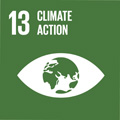- Docente: Raffaele Camangi
- Credits: 6
- SSD: ICAR/22
- Language: Italian
- Teaching Mode: Traditional lectures
- Campus: Bologna
- Corso: First cycle degree programme (L) in Techniques and Management for Construction and Land (cod. 6115)
-
from Feb 20, 2025 to Jun 13, 2025
Learning outcomes
At the end of the Urban and Rural Estimation course, the student knows the basic elements of financial mathematics (simple and compound interest, income from real estate and land, allocations); the bases of the methods and procedures for estimating the market value, the transformation value, the complementary value and capitalization for buildings, ordinary and rural buildings; the bases of the legal assessment, the criteria for estimating damages, for the stipulation of insurance contracts, the procedures for expropriation and indemnities, annuities and inheritances.
Course contents
Principles of general economics.
Production and consumption; the production cost.The market and price formation. Supply and demand. The real estate market, buying, selling and leasing of buildings.The Italian tax regime with reference to taxes on buildings.
General estimate
Meanings and purposes of the estimate. The appraisal judgment.The economic aspects of goods: market value, cost, transformation, capitalization of income, complementary, social use.Uniqueness of the estimation methodology and theory of ordinariness.Estimation procedures: synthetic and analytical estimate for the research of the market value, (mono-parametric and multi-parametric, the IVS (standard valuation indices). Procedures for the research of the cost value: synthetic estimate and estimated metric calculation.
Real estate estimate (civil and rural)
Estimation of civil buildings: general aspects, estimate based on market, cost, transformation and complementary value. Synthetic and analytical procedure. Estimate with I.V.S. (standard evaluation indices). The right of superelevation. The estimated metric calculation.Estimates relating to the condominium: general aspects, regulation and administration of the condominium, compilation of thousandth tables (virtual surface). Distribution of condominium expenses.Estimation of building areas: general aspects, estimate based on market value, transformation, complementary.Estimate of rustic funds and rural buildings.
Legal estimate
Estimation of damages: general aspects, the insurance contract. Fire damage to buildings, from illegal construction.Estimation of real rights: usufruct, easements.Estimation of compensation for expropriations and occupations: general aspects, evolution of the legislation and Presidential Decree 327/2001. The expropriation process, compensation for expropriation and temporary occupation for agricultural areas, building areas and buildings.Estimation of hereditary successions: general aspects, phases of hereditary succession, types of succession, patrimonial division.
Environmental estimate
Evaluation of environmental assets: characteristics of environmental assets, social use value, direct and indirect proceduresJudgments of convenience for public works: cost and benefit analysis, criteria for evaluating convenience.
The expert's professional activity
The appraisal context, civil mediation. Activities of the C.T.U. Arbitration.
Elements of financial mathematics
Interest and capitalization formulas
Readings/Bibliography
Recommended texts:
Stefano Amicabile, Corso di economia ed estimo vol 1, 2 + prontuario - Hoepli
M. Michieli, G.B. Ciipollotti Trattato di estimo (generale. immobiliare, agrario. forestale, ambientale, legale) Ed agricole
Teaching methods
We will operate with a laboratory-type teaching strategy, which will take into account the problem-based approach to topics, interactive lessons and frontal lessons will be carried out, during which moments of reflection and/or verification will be developed. In carrying out exercises and/or analyzing concrete cases, a continuous reference will be sought with the local territorial reality and also a connection between the different estimating problems faced.
Assessment methods
The verification of the learning of the civil and rural estimating course takes place through a single final exam, which ascertains the acquisition of the knowledge and skills expected in the estimating field through the conduct of a written test (with the use of manuals) and an oral test without the help of notes or books.At the time of the test, students must have an identification document (identity card or driving license or passport) or badge with them, so that they can show them to the commissioners.The paper consists of the analysis and development of an estimation case that covers the entire program of the entire course. The test is combined with an evaluation grid, and a score whose total exceeds the maximum of 3 units (33/30) is declared immediately before the exam. The test must be carried out within the indicated time range and generally not exceeding two hours.The oral exam takes place after the written test, and has the aim of integrating the written test with some complementary questions which may affect the final score by no more than +/- 3 points.
Teaching tools
Use of teaching tools such as digital boards; furthermore, it is preferable for students to have their own laptop with an Office environment (Word Excel Power Point) for exercises.
Office hours
See the website of Raffaele Camangi
SDGs


This teaching activity contributes to the achievement of the Sustainable Development Goals of the UN 2030 Agenda.
